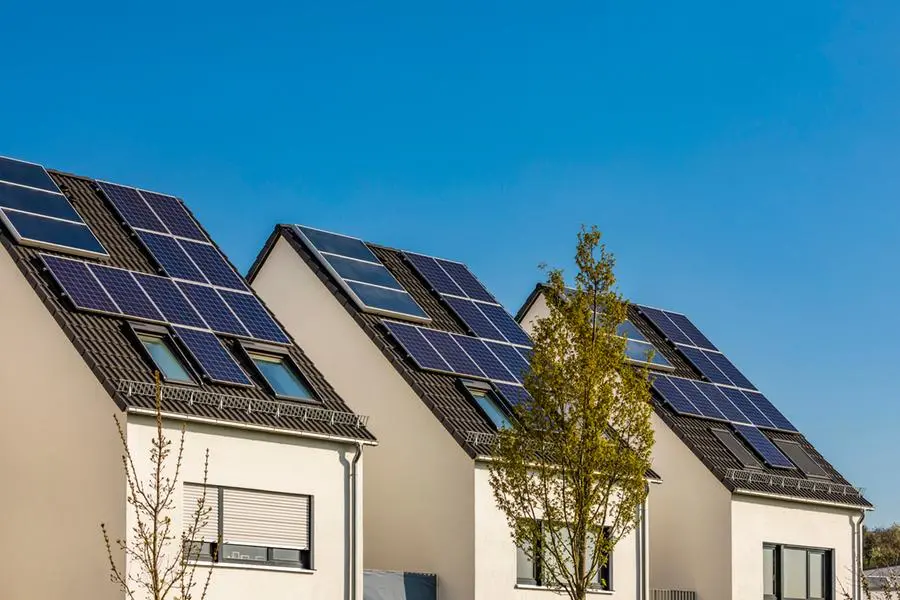PHOTO
Plentify partnered with Herholdt’s, a major distributor of solar and electrical solutions, to launch SolarBot, an intelligent controller for home solar and battery systems. This collaboration is focused on giving solar customers better control over their systems and to help revitalise the country's residential solar industry, which has experienced a slowdown in sales following the recent reduction in load shedding. This builds on its smart geyser deal with Balwin Properties and broader IoT strategy.
The Herholdt's partnership is only one step in Plentify's growth strategy.
SolarBot is designed to optimise the performance of solar systems by intelligently managing the charging and discharging of batteries based on factors such as weather patterns, load shedding schedules, and household demand.
This helps homeowners get the most out of their solar investment while also providing backup power during load shedding events.
"One of the side effects of the prolonged break from load shedding is that solar sales have slowed dramatically as households prioritise spending elsewhere," Kailas Nair, cofounder and chief growth officer at Plentify, tells Bizcommunity in an exclusive interview.
"The rapidly declining costs of solar panels and batteries have gotten us a lot of the way there, but that is not enough – as many solar owners are finding out, after interrogating their solar performance with more scrutiny with load shedding receding.”
It really matters how effectively you use your solar system. You could have 50 panels on your roof in the middle of a summer’s day, but if that energy has nowhere to go - if your battery is full and home demand low with no grid exports - it will not produce.
Geyser management
You may know Plentify as the maker of HotBot, an intelligent geyser controller that Balwin Properties is rolling out in its developments, and this works in conjunction with SolarBot to further enhance energy efficiency.
Now HotBot optimises geyser usage by favouring solar power over grid electricity and coordinating with SolarBot to heat water using excess solar energy that would otherwise be wasted.
"With SolarBot we can figure out the most optimal way to charge and discharge your battery, once your battery is full, we can then tell your geyser to come on via HotBot,” says Nair, explaining the power of the IoT ecosystem Plentify is building.
“And once your geyser is fully heated up, in the future we can then tell your pool to come on through, you know, whatever our product is called for that. And say, turn your pool pump on and start to clean your pool and so on and so forth," says Nair.
More accessible
The partnership between Plentify and Herholdts is expected to make smart solar energy solutions more accessible and affordable for homeowners.
Herholdts will leverage its extensive network of over 200 trusted installers to bring Plentify's products to homes across the country.
Distribution deals like this will drive Plentify’s ambitious plans for its IoT business – with a roadmap that includes the integration of additional appliances such as pool pumps, stoves, ovens, space heating and cooling systems, and even EV chargers in the future.
The company is also actively exploring integration with major smart home platforms like Samsung SmartThings and Apple HomeKit.
"Samsung, for example, is actually quite far along in terms of not just a smart home solution, but also an energy management solution,” Nair discloses.
“So there would be a very natural fit between what we're doing versus what they're doing. And that'll be an integration and a partnership that we're very keen to pursue.”
Matter not IoT priority
While Plentify acknowledges the growing importance of the Matter standard in the smart home industry, the company has not yet committed to a timeline for its integration.
"I know Matter is on our roadmap, but I don't know exactly how high up the roadmap is," admits Nair.
Plentify equipment is built with the 868MHz LoRa radios which opens it up to broader connectivity for smart home hobbyists.
Competitive products
Nair, however, argues that SolarBot and HotBot are more cost effective than what hobbyists can build.
"In terms of cobbling together bespoke pieces of hardware to kind of create something yourself... I do believe at a hardware level, our product is still very competitive relative to those solutions,” he says.
On top of that, the biggest differentiator is the data science of the machine learning that sits underneath our product, because we've been able to train it on millions of years of geyser data… and that's allowing us to make very intelligent decisions on when to turn these appliances on and off in a way that our competitors who might be cobbling something together won't be able to do.
"We started with the leading inverter brands in the country, which are Sunsync and Deye, but we have a roadmap of inverter brands that we're going to be integrating with next," says Nair. "For example, Sungrow, SigEnergy, and Luxpower."
With this in mind, Plentify seems well-positioned to play a key role in the continued growth and development of SA's solar energy and smart home market.
All rights reserved. © 2022. Bizcommunity.com Provided by SyndiGate Media Inc. (Syndigate.info).























